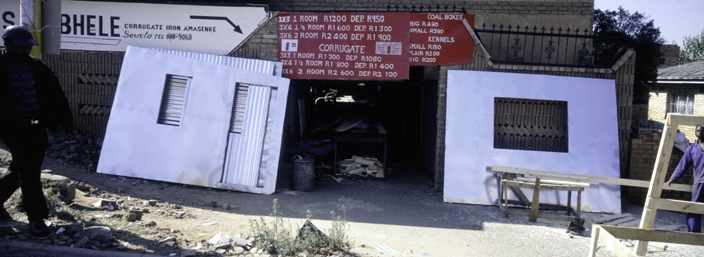|
Included in the
packets of postcards are six photographs taken in the townships of Soweto,
Alexandra and Tokoza in the Province of Gauteng, South Africa. Each of
the six colours of the South African flag is represented in this collection.
In May, 2000, I, Cecilia Parsberg, visited Soweto. The following month
Madoda Msibi, who lives in Soweto, guided me through different townships
surrounding Johannesburg. The photographs were taken during these guided
visits. We decided to display and sell the selected images at souvenir
stalls in the townships where they were photographed.
For the majority
of Johannesburg's inhabitants home is in one of the black townships, surrounding
the city. Most white South Africans are completely ignorant of life in
the townships, very few have ever been inside one. The situation is slowly
changing, more and more visitors from all over the world come to the townships.
They want to see the historical places and some of them also stay over
night with a local family. Today there is a growing number of "whities"
living in Soweto, many of them has recently immigrated.
The townships have
played a crucial role in the struggle against apartheid. The White House
(as it is commonly called), located in Orlando West, Soweto, has served
past and present as a meeting place for people involved in the struggle
against apartheid.
The blue house and black and red shacks are located in Alexandra, and
the green and yellow shacks are located in Thokoza, completing the colours
of the South African flag.
From January, 2001,
the packets of postcards can be bought at the souvenir stall of Madoda
Fly Msibi at Hector Petersen Square in Soweto. 3000 packets=18.000 postcards
have been printed. In January 2001 we also went back to every house and
shack pictured on the postcards and handed over packets, this was documented
on video.
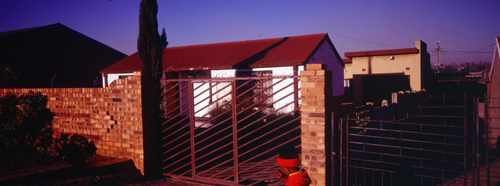 |
| "THE
WHITE HOUSE" |
|
| The
photographs of the blue house, the black and red schacks are taken
in Alexandra. It's a huge very poor township and a part of Sandton
City, a wealthy predominantly white ghetto outside Johannesburg. There
are still no guided tours to Alexandra. |
 |
| "FOR
SALE/CASH"
|
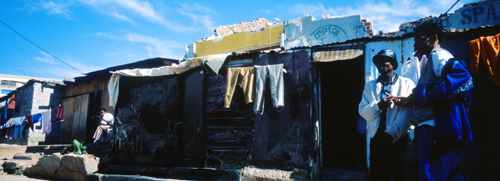 |
| |
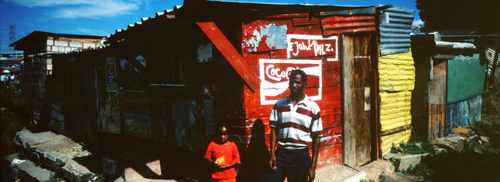 |
| |
|
| The
green and yellow schacks are from Thokoza. This township is still
divided in areas for coloured indian and black people. It started
as a township for black people, in the 70:s the government built houses
for the coloureds and in the 90:s houses were built for indians. |
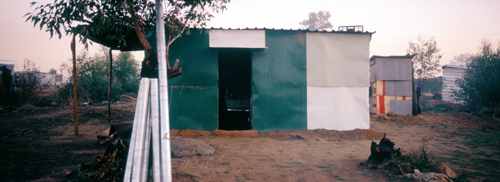 |
|
| |
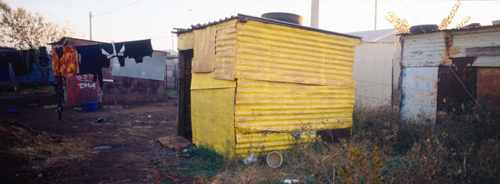 |
| |
|
|
|
Although South
Africa has rejected racism, it still collects population statistics on
the basis of race. Of the population of about 38 million, some 28 million
are black, 5.6 million are white, 3.4 are coloured (ie.mixed race) and
1 million of Indian descent. South Africa's economy is a mixture of First
and Third World with a marked disparity in incomes, standards of living,
lifestyles, education and work opportunities.
|
| This piece
has been made possible through the SIDA project "Cultures in Dialogue,"
initiated and organized by Bild Museet, Umea, Sweden. I teach as Guest Professor
at Umea Academy of Fine Arts, and in this project I taught as Exchange Lecturer
in the Fine Arts Department at Witwatersrand University, Johannesburg, South
Africa, for two months (17 April through 1 June). |
